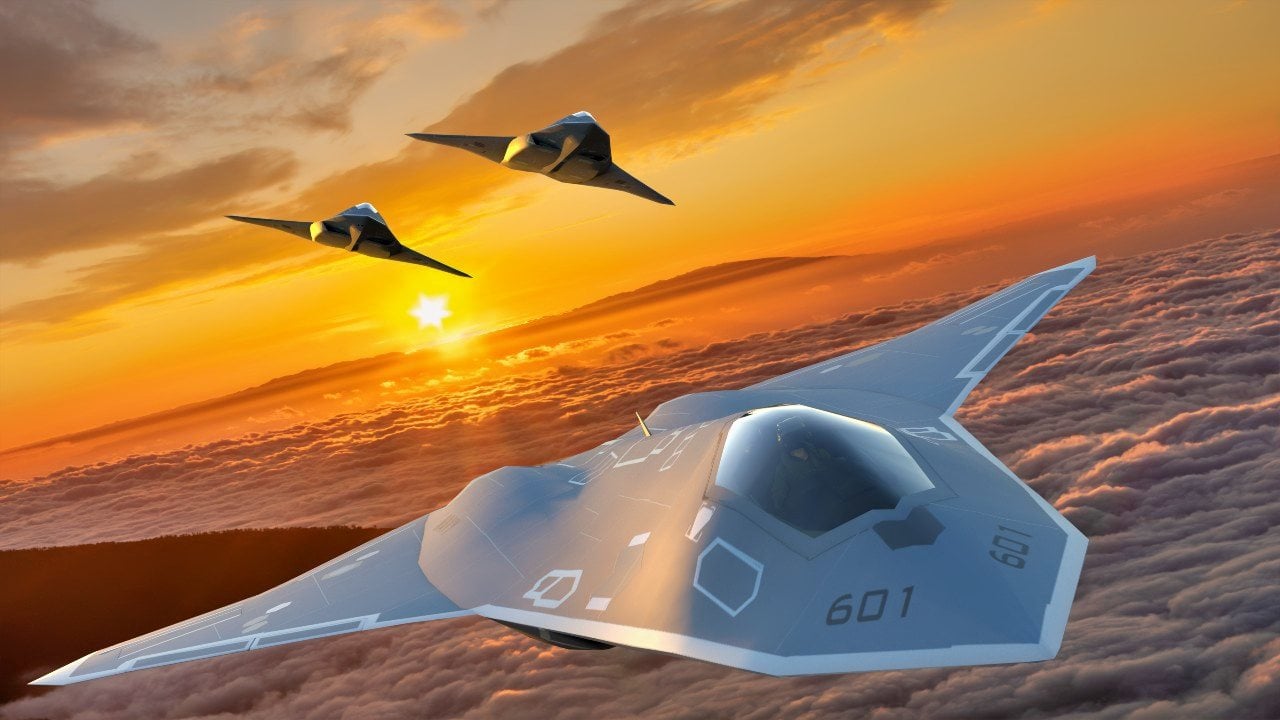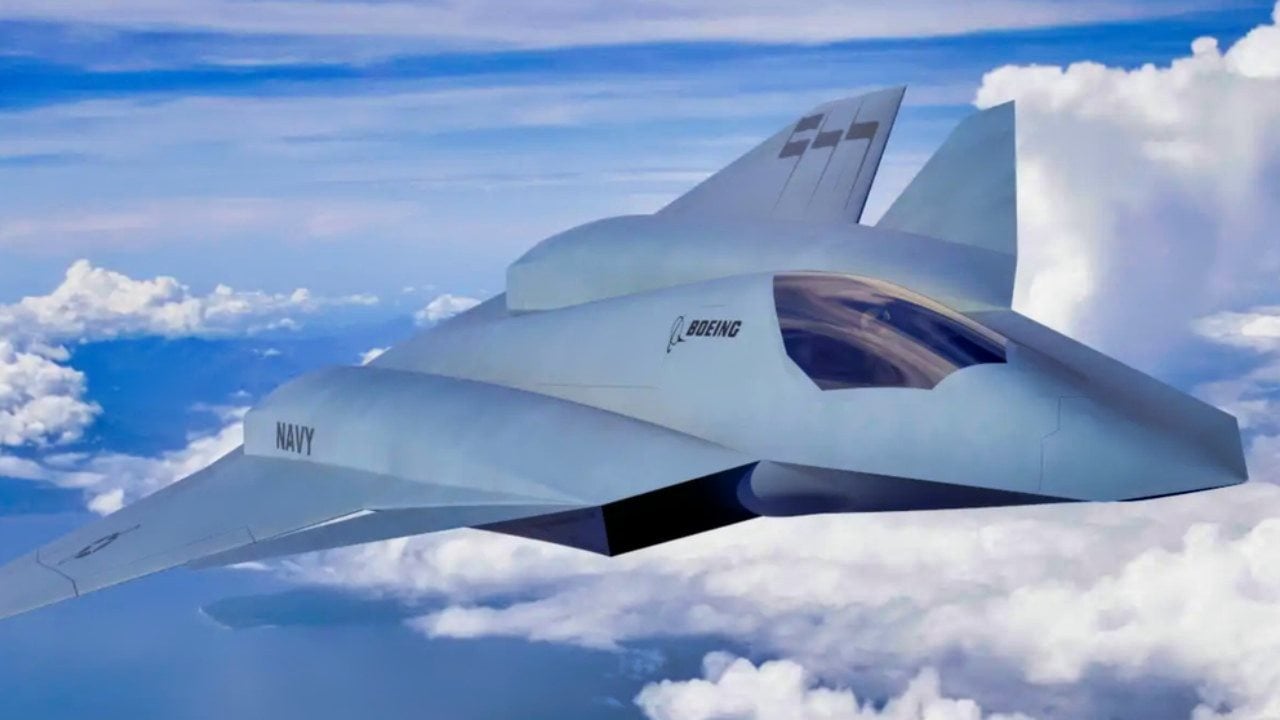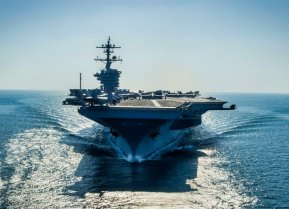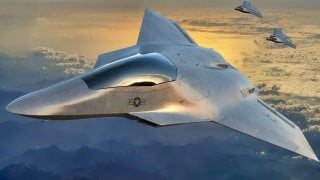NGAD vs. F/A-XX: The U.S. Military Has Big 6th Generation Fighter Dreams
The NGAD and F/A-XX 6th generation fighter programs will transform the U.S. military in ways we can't comprehend just yet - and China is watching closely.
As Beijing’s hostile behavior in the South China Sea continues to ramp up, the U.S. military is rapidly developing next-generation programs to counter the threat. While both the Navy and Air Force fly F-35 Joint Strike Fighter variants, this fifth-generation platform may not give America the edge it would need if kinetic war does emerge with China. Both services are working toward introducing their respective sixth-generation programs. The USAF’s Next-Generation Air Dominance (NGAD) and the Navy’s F/A-XX are both expected to combine stealth, supermaneuverability, advanced weapons, and digital designs. While some information has been released surrounding the NGAD program, the Navy’s sixth-gen counterpart has remained more secretive.
The Air Force’s NGAD Program
The USAF’s next-generation program can be derived back to the Defense Advanced Research Project Agency (DARPA) studies carried out back in 2014. The purpose of the study was to investigate new concepts for air superiority systems of future decades for both the Navy and Air Force. Based on the results of DARPA, the Department of Defense launched its Aerospace Innovation Initiative to begin the next phase of developing a next-generation prototype. NGAD aims to develop several technological areas, including stealth, advanced weapons, and propulsion. Ultimately, the new fighter will replace the aging F-22 Raptor.
What We Know About The Program
Over the summer, the Air Force revealed its plans to produce a fleet of approximately 1,000 unmanned aerial vehicles (UAVs) and 200 sixth-generation stealth combat jets. These Collaborative Combat Aircraft (CCA) are being designed to fly alongside the fighters as “loyal drone wingmen.” In fact, the role of advanced UAVs will be dominant in the USAF’s future fighter programs. Air Force Secretary Frank Kendall referred to the CCAs as controlled versions of electronic warfare or targeting pods currently positioned under the wings of existing fighters. An underlying purpose of these advanced drones is quantity. Even if the service possesses more advanced fighters than China or another adversary in times of war, the People’s Liberation Army Air Force has a larger fleet. For this reason, the USAF is planning to create mass with an abundance of these cheaper CCAs.
The Air Force Secretary detailed that “The expectation is that these (unmanned) aircraft can be designed to be less survivable and less capable, but still bring an awful lot to the fight in a mixture that the enemy has a very hard time sorting out and dealing with,” adding that “You can even intentionally sacrifice some of them to draw fire, if you will, to make the enemy expose himself.”

FA/XX - What About The Navy’s Sixth-Generation Fighter Program?
While limited information surrounding the NGAD has been revealed by the USAF, the Navy has been very close-lipped regarding its own F/A-XX program. The Navy first issued a formal request for information for its next-generation fighter back in 2012. Specifically, the service required an air superiority jet with multi-role capabilities able to replace the fleet of F/A-18E/F Super Hornets and EA-18G Growler platforms in the 2030s. The Navy also requires a new fighter that will complement the existing F-35C Lightning II.
Like the Air Force’s NGAD, experts believe that the Navy’s F/A-XX will involve uncrewed operations in some capacity. Drones have become more popularized following the 2021 Nagorno-Karabakh conflict and the ongoing Russian invasion of Ukraine. Since UAVs are cheaper and easier to assemble than larger aircraft, they could be a huge asset to the service as budgets will be stretched to accommodate these sixth-generation fighters.
In addition to the potential inclusion of drones, experts assume that the primary mission sets for the Navy’s new fighter will include ground attack, air combat, surface warfare, and close air support. The F/A-XX fighter is also expected to feature supercruise capabilities and advanced next-generation stealth. Additionally, the sixth-gen fighters will likely be equipped with sensors, radars, and networking adaptabilities like the F-35C.

When it comes to future conflict, many military aviation experts agree that the extent of aerobatic dogfighting battles will be minimized as sophisticated sensors and long-range weapons have come into the picture. The cutting-edge capabilities both the Navy’s F/A-XX and USAF’s NGAD fighters will possess are not only being considered in the U.S. China is working to develop its own next-generation airframe that could perhaps match the abilities of its American counterparts down the line. The USAF probably has a leg up on Beijing in terms of time, however, the Navy’s F/A-XX program is further behind.
About the Author
Maya Carlin is an analyst with the Center for Security Policy and a former Anna Sobol Levy Fellow at IDC Herzliya in Israel. She has by-lines in many publications, including The National Interest, Jerusalem Post, and Times of Israel. You can follow her on Twitter: @MayaCarlin.
All images are Creative Commons or Shutterstock.


